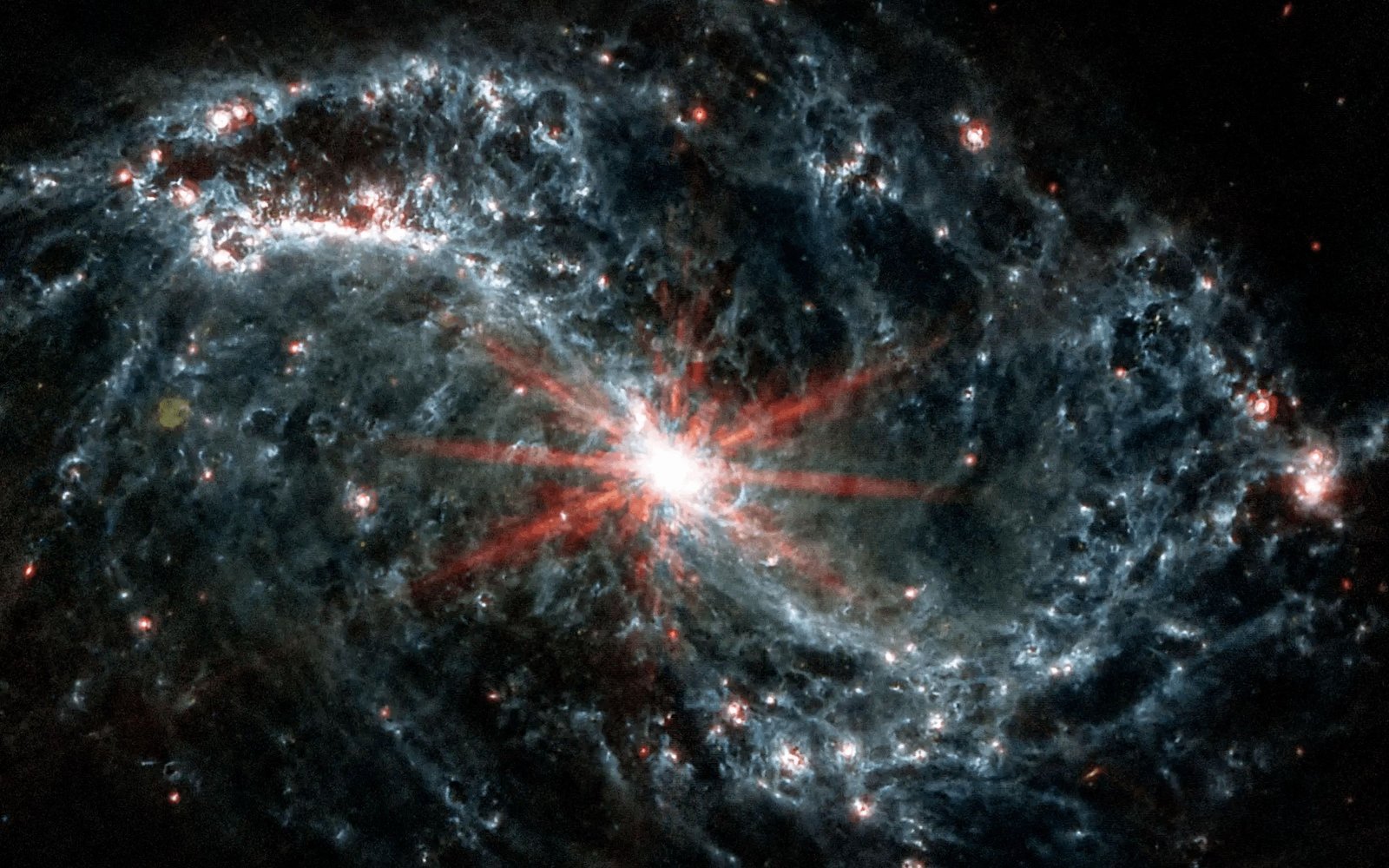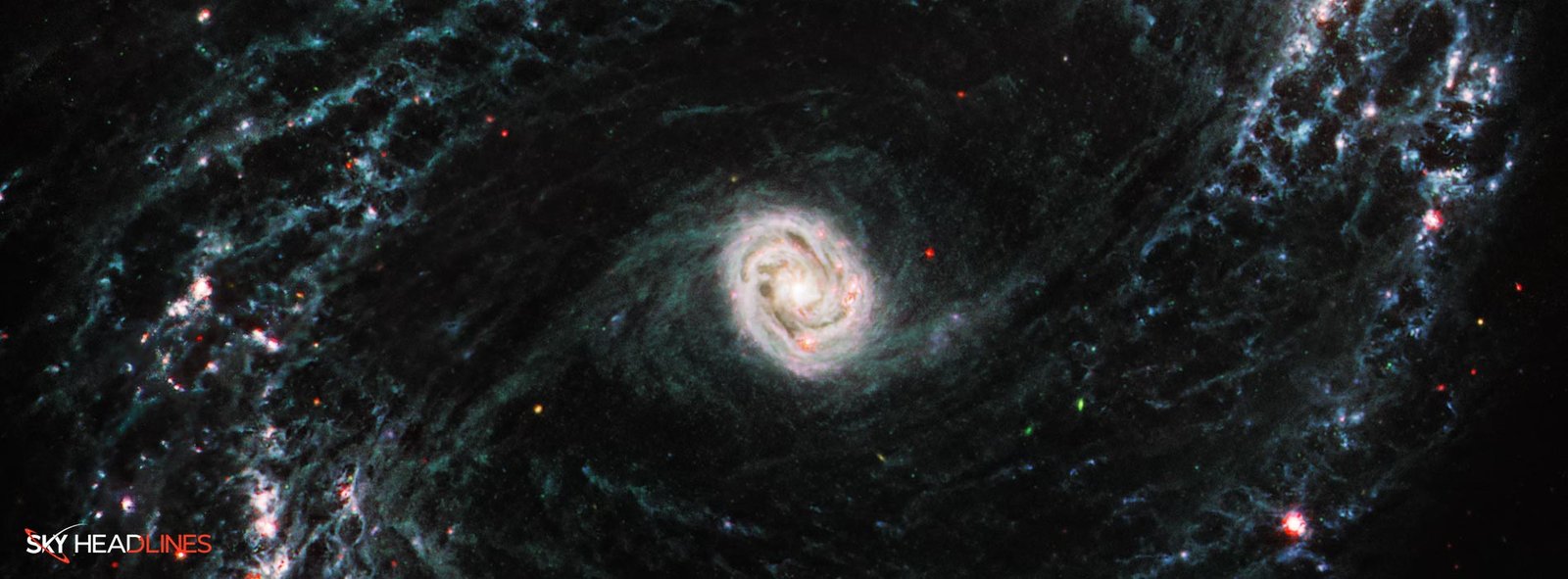At infrared wavelengths, NASA’s James Webb Space Telescope is revealing star formation, and networks of gas and dust in nearby galaxies. An initial collection of 21 research publications has shed light on how the universe’s simplest processes, such as star formation, affect the history of its largest objects, galaxies.
PHANGS collaboration:
In Webb’s first year of science operations, the Physics at High Angular resolution in Nearby Galaxies (PHANGS) collaboration is conducting the largest nearby galaxy survey. Janice Lee, Gemini Observatory chief scientist at the National Science Foundation’s NOIRLab and affiliate astronomer at the University of Arizona in Tucson, leads Webb observations.
Five of the team’s 19 spiral galaxies—M74, NGC 7496, IC 5332, NGC 1365, and NGC 1433—have been observed in Webb’s first few months of science operations. The results amaze astronomers.
David Thilker is a Professor at Maryland’s Johns Hopkins University. He says: “The clarity with which we are seeing the fine structure certainly caught us by surprise,”
Erik Rosolowsky is a Canadian student at the University of Alberta. He says that he was part of the team. Moreover, he explains: “We are directly seeing how the energy from the formation of young stars affects the gas around them, and it’s just remarkable,”

Webb’s Mid-Infrared Instrument (MIRI) photos show brilliant cavities of dust and large gas bubbles that line the spiral arms. However, This web of characteristics appears to be discrete and overlapping shells and bubbles where young stars release energy in some nearby galaxies.
Karin Sandstrom is also a squad member at Columbia university San Diego. She says: “Areas which are completely dark in Hubble imaging light up in exquisite detail in these new infrared images, allowing us to study how the dust in the interstellar medium has absorbed the light from forming stars and emitted it back out in the infrared, illuminating intricate networks of gas and dust,”
The Evolution Nearby Galaxies:
For a long time, astronomers lacked the high-resolution images necessary to examine these formations, but Webb has changed all that.
Adam Leroy is a member of the PHANGS team. He explained that the team has conducted years of observations of Nearby Galaxies at optical, radio, and ultraviolet wavelengths. The observation is get using various telescopes. This telescope includes NASA’s Hubble Space Telescope, and the Atacama Large Millimeter/Submillimeter Array. Moreover, the Very Large Telescope’s Multi Unit Spectroscopic Explorer is also very significant in the observation.
Despite these extensive observations, the earliest stages of a star’s lifecycle have remained out of view, as they occur within dense clouds of gas and dust that shroud the process from view. These networks of gas and dust are also known as molecular clouds. They are clouds where stars are born. Moreover, the complex processes that lead to the formation of new stars take place in this region. Studying these molecular clouds in more detail is very significant for the PHANGS team. As they hope to shed light on the earliest stages of star formation. This will help them gain a better understanding of how stars are born and evolve.
With its tremendous infrared capabilities, Webb can see past the obscuring dust and piece it together.
Polycyclic aromatic hydrocarbons:
Polycyclic aromatic hydrocarbons play also an essential role in star and planet formation. Besides, Their emission can be detected at specific wavelengths. These emissions can be observed by MIRI (7.7 and 11.3 microns) and Webb’s Near-Infrared Camera (3.3 microns). With the initial PHANGS observations, Webb was able to spot these compounds.
Understanding the bigger picture of galaxy evolution through the study of these interactions at the smallest scale is possible.

Leader of the PHANGS team:
Eva Schinnerer is a leader of the PHANGS team. Moreover, he is an astronomer at the Max Planck Institute for Astronomy in Heidelberg, Germany. He explained about the networks of gas and dust: “Because these observations are taken as part of what’s called a treasury program, they are available to the public as they are observed and received on Earth,”
In order to assist in the process of discovery, the PHANGS team will work to compile and share data sets that align Webb’s data to each of the complementary data sets gathered previously from the other observatories.
In a statement, Lee expressed his gratitude for the high resolution of the telescope. The telescope allows conducting of a comprehensive census of star formation in nearby galaxies beyond the Local Group. Moreover, Lee suggests that this census will provide insight into how star formation and its feedback impact the interstellar medium. This could either lead to the formation of the next generation of stars or impede their formation. Furthermore, The inventories of interstellar medium bubble structures will help in understanding the complex interplay between star formation and the surrounding environment. This will provide important insights into the formation and evolution of galaxies.
PHANGS study is part of the General Observer program 2107. The Astrophysical Journal Letters released the team’s early findings from 21 research in a special emphasis issue.





